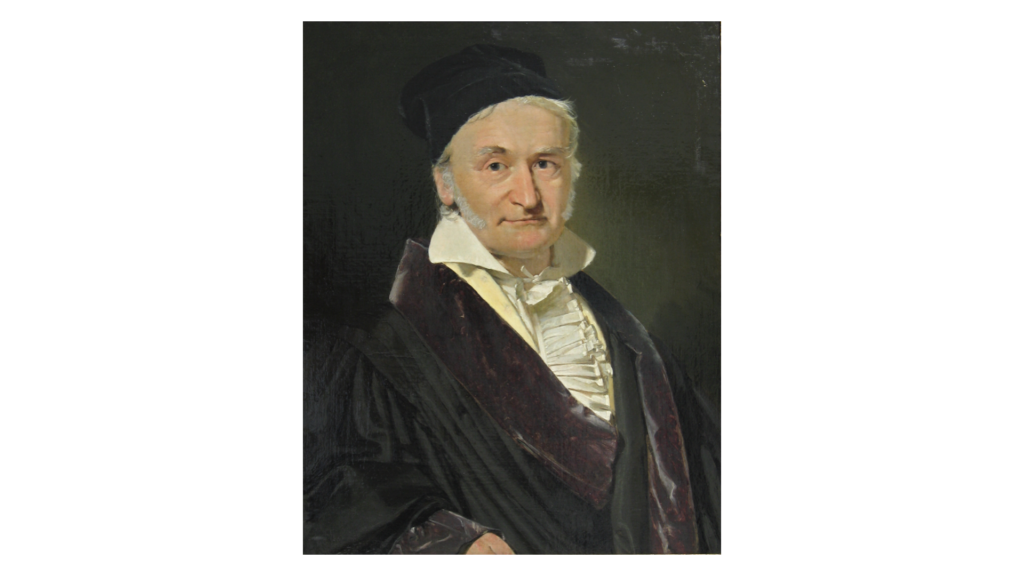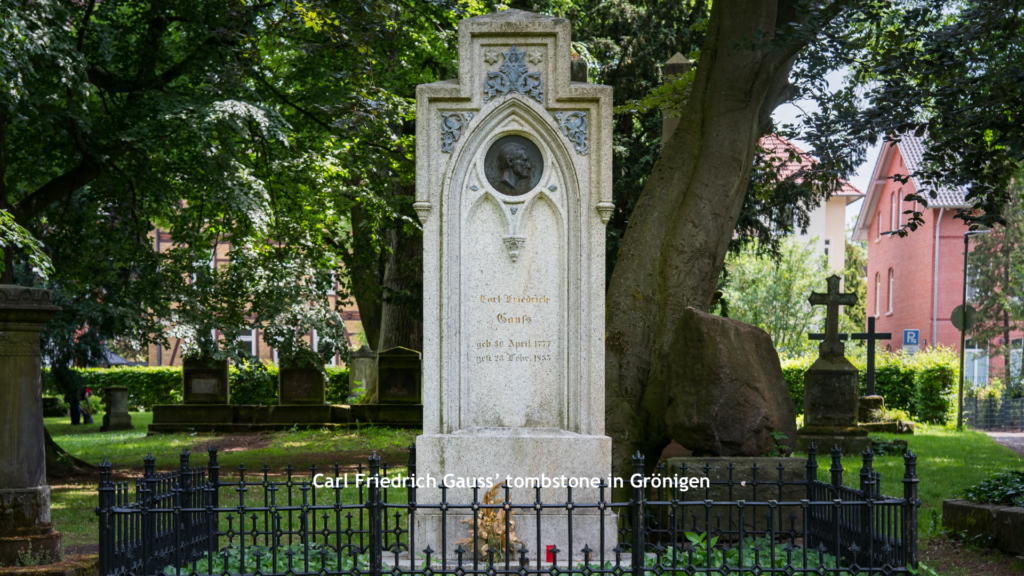Carl Friedrich Gauss
Carl Friedrich Gauss (1777–1855), the Father of Arithmetic Progression, was a German child genius who went on to become one of the greatest mathematicians of all time, and thanks to him we can now easily find the sum of an arithmetic sequence.

His life
Carl Friedrich Gauss was born in 1777 in the city of Brunswick into a lower class family. His father would work many different jobs just to make ends meet, and his mother was illiterate. However, this didn‘t stop him from becoming a renowned mathematician, astronomer and scientific researcher.
School and career
From the young age of seven, Carl Friedrich Gauss started elementary school, and his potential was noticed almost immediately. His teacher was amazed when Gauss summed the integers from 1 to 100. Gauss approached the question by visualising the sequence geometrically. He took 2 of the same arithmetic sequence and added them together by adding 1 unit to 100 units, 2 units to 99 units and so on until the last element of the sequence. This forms a rectangle with height n and width n+1 (where n represents the total number of elements in the sequence). The area of the rectangle (n x (n+1)) represents the sum of the two same arithmetic sequences added together, and if you want to find the sum of only one arithmetic sequence, all that is left to do is half the area.
At the age of Fourteen, Dorothea, Gauss‘ mother, recommended him to the Duke of Brunswick. The duke was impressed with Gauss‘ mathematical skills, and he gave the family money to send him to the local school. The Duke also funded his education at the University of Göttingen, where he studied mathematics.
When he was 22, Gauss graduated with a PhD. The Duke granted him the money needed for Gauss to become a private scholar in Brunswick. He worked at this job until 1807, when he went back to the university of Göttingen, as the Director of the Astronomical Observatory there. Gauss continued working at Göttingen until his death. Gauss‘ work over this time included astronomy, physics and pure mathematics.
Personal life
Gauss married his first wife, Johanna Osthoff in 1905 at the cathedral in Brunswick. Together, they had 3 children: Joseph, Wilhelmina and Louis. Unfortunately, Johanna suddenly died just one month after the birth of Louis. Gauss wrote a threnody, a mourning hymn, in honour of his wife. Gauss became incredibly private after this tragedy, people outside of his close circle called him unapproachable, whilst his visitors became angered by his grumpy behaviour.
Gauss‘ third child, Louis, died just a few months after Johanna‘s death. The widower took 5 years to remarry, which was unusually long for the time, signifying his connection with Osthoff was. His second wife, Wilhelmine Waldeck, was a friend of Osthoff. Together, they had 3 more children, Eugen, Wilhelm, and Therese. Gauss‘ life was once again hit by tragedy when Waldeck died in 1931, after being ill with Tuberculosis for 13 years. Gauss was in severe distress and he described himself as ‘the victim of the worst domestic sufferings.’
In his later years, he would turn to learning languages, reading literature, and science.
Gauss died in his sleep at the age of 77 in Göttingen, where he was educated and worked as director of the observatory. His death came after a series of illnesses.
His legacy includes his published scientific papers and disoveries, like the Gauss Lens, which is ideal for telescopes, and is similar to the modern day pancake lenses used in modern VR Headsets.

His discoveries
Work from a young age
From a young age, Gauss worked on plenty of mathematical theorems, and proofs. Like at the age of 15, when Gauss made a significant discovery. He discovered that using just a ruler and a compass, it‘s possible to create a regular polygon with 17 sides. This was a significant advance in discovering the conditions for constructability. He was able to create a sufficient condition that made this possible, but he never published a proof. Thanks to Gauss‘ work, in 1837, the Gauss-Wantzel theorem was presented in 1837 by Wantzel.
At the age of 21, Gauss began work writing a Latin textbook about Number Theory. This book brought together results and findings from great mathematicians like Euler and Fermat, whilst adding onto them in Gauss‘s style, and became known as the Disquisitiones Arithmeticae or Arithmetical Investigations. This was published 3 years later, when Gauss was 24. This book contained a lot of what he became renowned for Through this book, Gauss made number theory a rigorous and systematic genre of mathematics, and helped it develop into what it is today, whilst also spurring much research in universities throughout the world.
Fermat‘s Last Theorem
In 1816, Gauss was heavily encouraged to work on a proof for Fermat‘s last Theorem. This Theorem was written in the margin of a book by Pierre de Fermat, where he famously stated that he had a proof and the margin was simply to small to fit it. This was one of the biggest mathematical teases ever, and attracted a lot of interest in solving it.
Gauss didn‘t solve the theorem, but he did prove the theorem true for the cases n=3 and n=5. Although both of these had been proven, Gauss provided an alternative proof that took advantage of Eisenstein Integers, which are complex numbers that follow a specific form. His work on Fermat‘s last theorem was one stepping stone that led to the Wile‘s proof of the theorem.
Rediscovery of Ceres
Ceres is a dwarf planet located in the asteroid belt, between Mars and Jupiter. This was originally discovered by Italian astronomer Piazzi in 1801, however it eventually disappeared behind the sun‘s glare. Gauss heard about this, and he tackled the problem mathematically. His predicted position was put to the test in 1801, and it was accurate within half of a degree.
By helping the rediscovery of Ceres, Gauss became even more well known in the astronomical community. His method became key in Orbital Mechanics, where it was named Gauss‘s method, and became a well known way to determine the orbit of a celestial object using only 3 observations.
Awards
In 1809, Gauss won the Lalande prize, which was awarded to the person that made “he most unusual observation or writes the most useful paper to further the progress of Astronomy, in France or elsewhere.” He won this for creating Gauss‘ method, which was used to help the rediscovery of Ceres.
In 1838, Gauss won the Royal Society‘s Copley Medal, which was awarded to him for his inventions and mathematical researches in magnetism. This was an incredibly prestigious medal, which he achieved at the age of 61. After achieving this medal, Gauss began to learn Russian to be able to understand other scientific writings, and advance his career further.
Recently in 2002, the International Mathematical Union and the German Mathematical Society have named the Carl Friedrich Gauss Prize for Applications of Mathematics after him. Once every 4 years, with it’s first awarding in 2006 at the International Congress of Mathematicians. This puts the medal alongside the prestigious Fields and Chern medals, and writes Gauss’ name in history for his incredible work in mathematics.